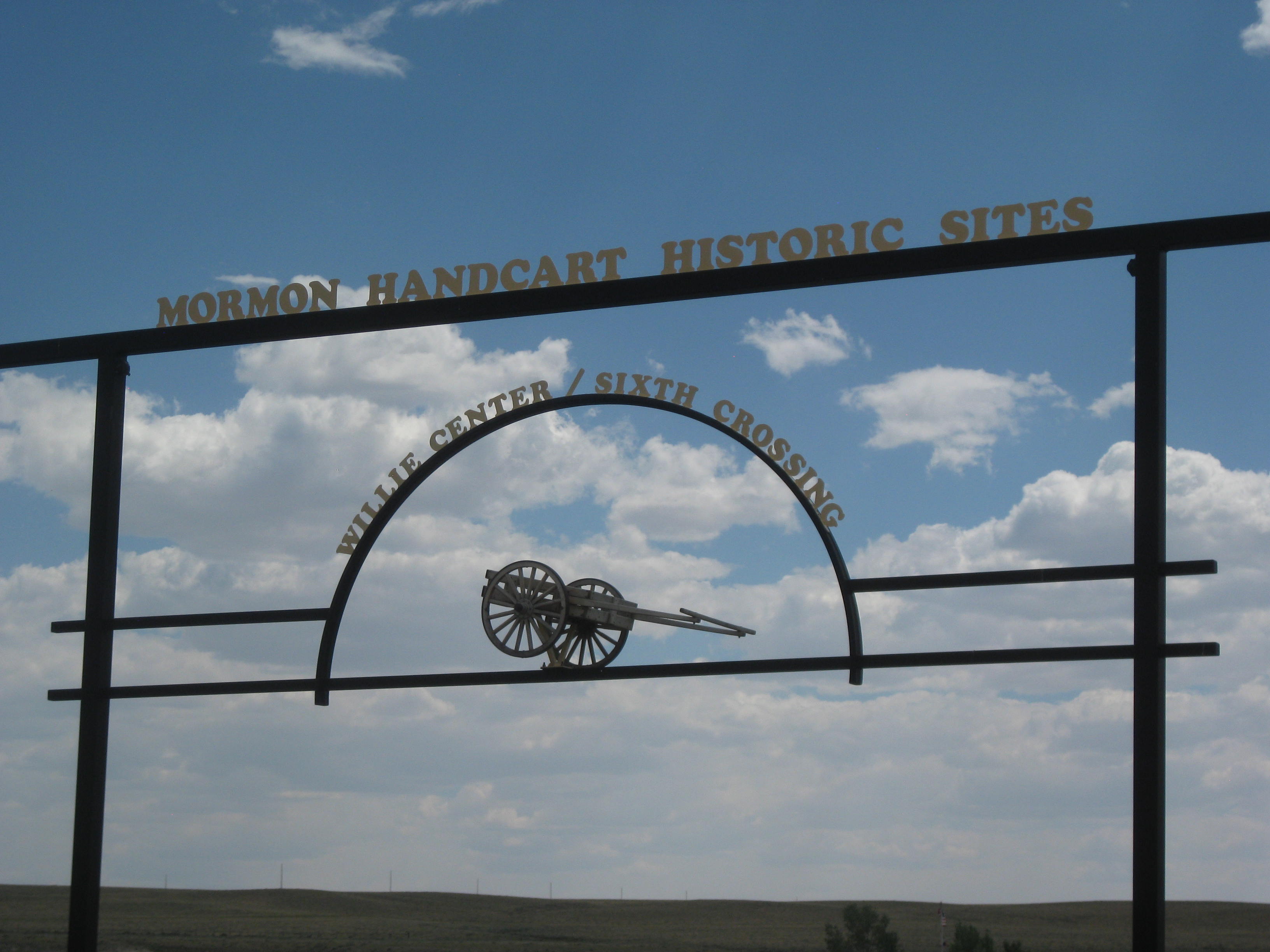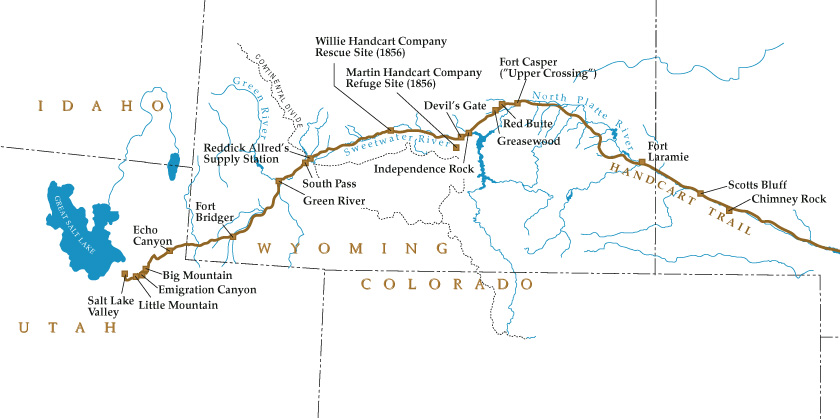 |
| Hiking the Seminoe Cutoff Trail |
 |
| The Sweetwater River |
As noted in the previous post, the winters in Wyoming can be brutal. The winter of 1856-1857 was the worst winter on record, as the Willie and Martin Handcart Companies made their way to the Great Salt Lake Valley. It is not unusual for winter storms to blow through this area every five to seven days. We have been here at the Sixth Crossing of the Mormon Handcart Historic Site for eleven days. During that time we have seen two storms come through, dropping 1-2 inches of snow, closing roads and disrupting power. In between these storms the weather becomes quite pleasant, with temperatures reaching the lower sixty degrees, melting off any accumulated snow.
The wind often blows here with the prevailing winds coming from the west-southwest. Wyoming is ranked first in the United States with an average annual wind speed of 12.9 mph.
 |
| Building and Painting Benches |
When the days are nasty we spend our days indoors learning about the area and the pioneers who emigrated through here on their way to California, Oregon and Utah. In between the wintery storms we head outdoors to work on projects such as cleaning up campsites, trimming willows, spreading native grass seed, painting picnic tables and benches, as well as familiarizing ourselves with the trails. This may sound unusual for missionaries, but because winter can be so cruel here in Wyoming, the weather takes its toll on outdoor facilities. Plus, we want to ensure that visitors who come to Sixth Crossing have an enjoyable, pleasant experience and we can answer their questions.
 |
| The Painting Crew |
 |
| Loading Willow Cuttings |
Currently we are in the off season, but expect to have trek groups arriving early June. It is estimated that hundred and thousands of people will come this summer to enjoy the historic site and to hike the trails, and we want to be ready for them. So until then, we will continue working on stories and projects and hiking the surrounding trails. I must admit, these past few days have been very fulfilling for us. We have enjoyed getting to know the other missionaries we are working with. The surrounding scenery is absolutely beautiful with its wide open space and far off mountains. Plus, there is a special spirit here, just to be able to walk where so many early pioneers walked before us. We are coming to love Wyoming and its people.
 |
| Moon-rise over the Sagebrush |
Remember: "You can't buy happiness, but you can live in Wyoming"
Elder and Sister Bowden















